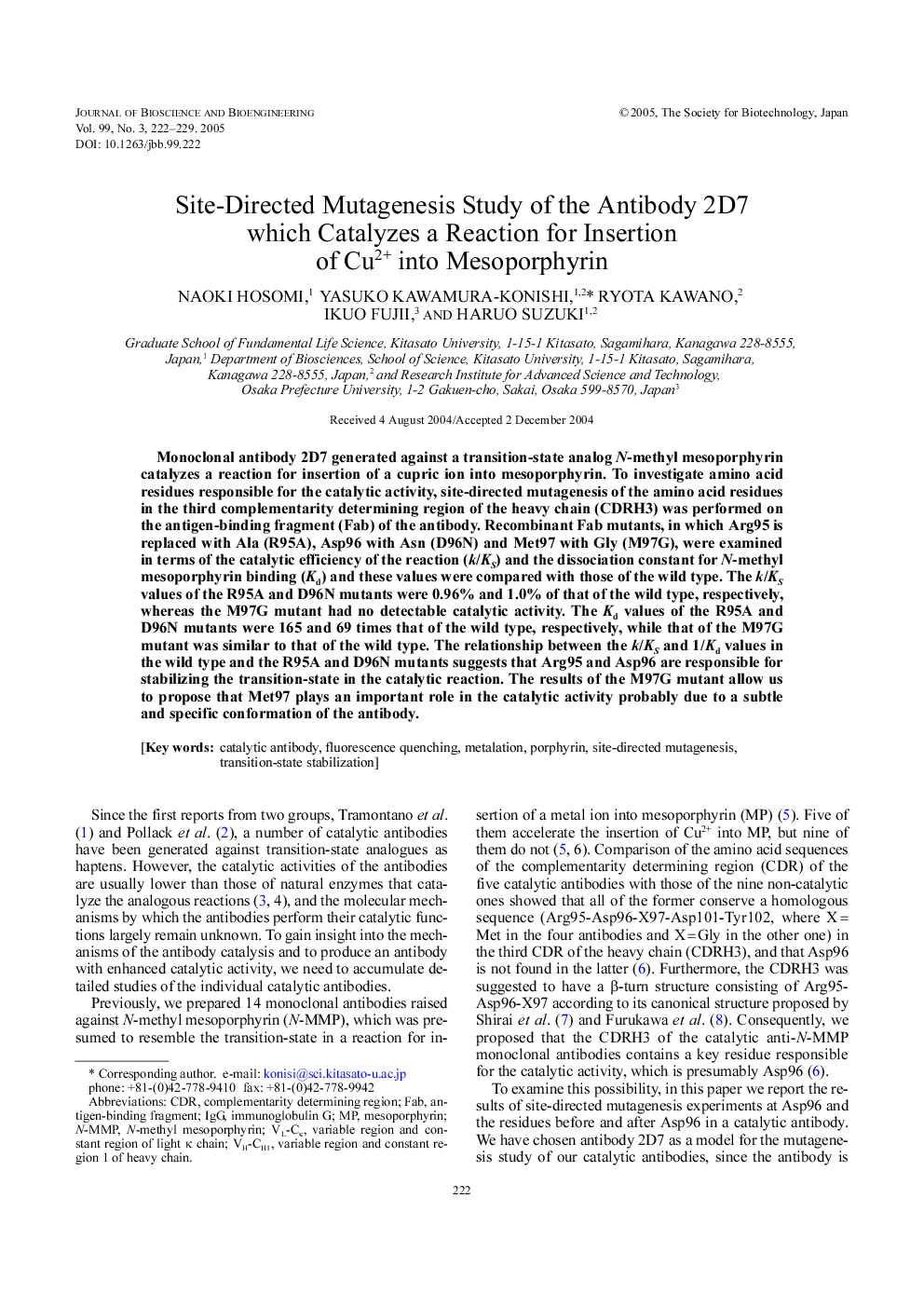| Article ID | Journal | Published Year | Pages | File Type |
|---|---|---|---|---|
| 9603249 | Journal of Bioscience and Bioengineering | 2005 | 8 Pages |
Abstract
Monoclonal antibody 2D7 generated against a transition-state analog N-methyl mesoporphyrin catalyzes a reaction for insertion of a cupric ion into mesoporphyrin. To investigate amino acid residues responsible for the catalytic activity, site-directed mutagenesis of the amino acid residues in the third complementarity determining region of the heavy chain (CDRH3) was performed on the antigen-binding fragment (Fab) of the antibody. Recombinant Fab mutants, in which Arg95 is replaced with Ala (R95A), Asp96 with Asn (D96N) and Met97 with Gly (M97G), were examined in terms of the catalytic efficiency of the reaction (k/KS) and the dissociation constant for N-methyl mesoporphyrin binding (Kd) and these values were compared with those of the wild type. The k/KS values of the R95A and D96N mutants were 0.96% and 1.0% of that of the wild type, respectively, whereas the M97G mutant had no detectable catalytic activity. The Kd values of the R95A and D96N mutants were 165 and 69 times that of the wild type, respectively, while that of the M97G mutant was similar to that of the wild type. The relationship between the k/KS and 1/Kd values in the wild type and the R95A and D96N mutants suggests that Arg95 and Asp96 are responsible for stabilizing the transition-state in the catalytic reaction. The results of the M97G mutant allow us to propose that Met97 plays an important role in the catalytic activity probably due to a subtle and specific conformation of the antibody.
Keywords
Related Topics
Physical Sciences and Engineering
Chemical Engineering
Bioengineering
Authors
Naoki Hosomi, Yasuko Kawamura-Konishi, Ryota Kawano, Ikuo Fujii, Haruo Suzuki,
